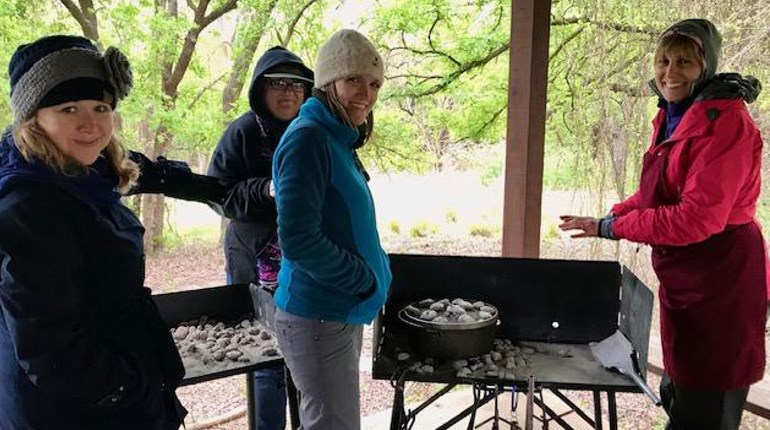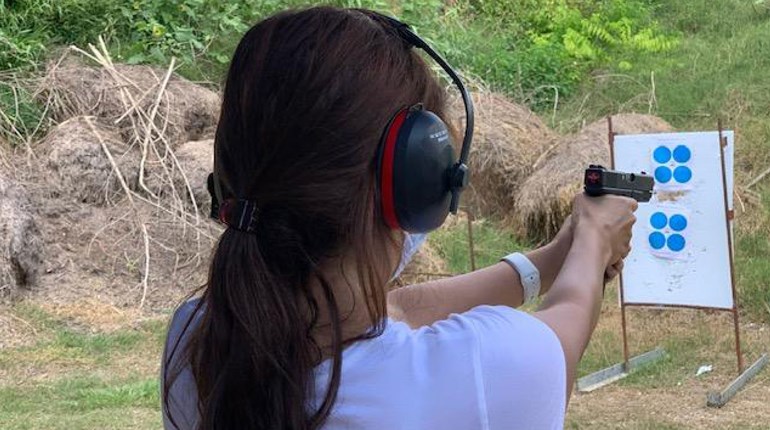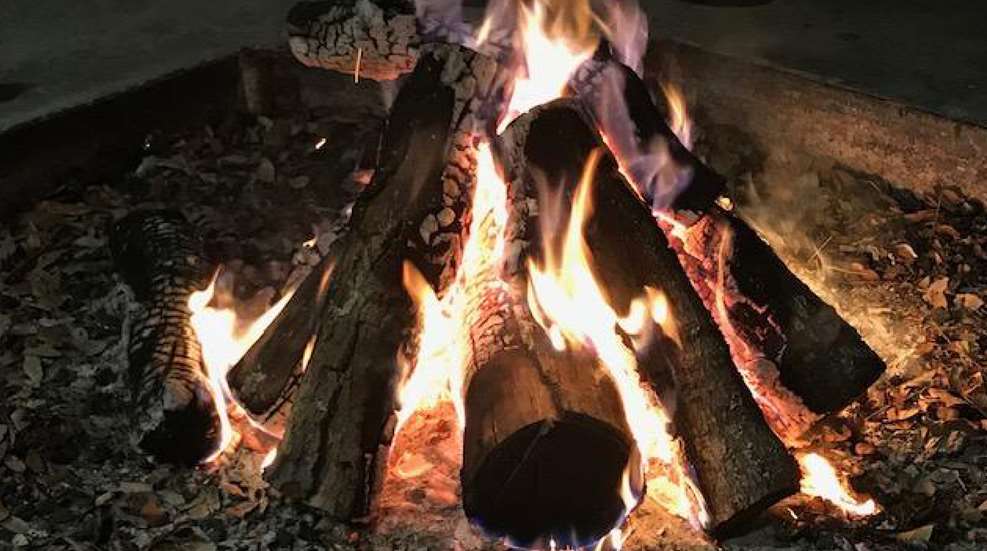
Every outdoorsman and woman should know the 3’s of fire building, which is essential if you want a campfire. After all, campfires are a mainstay in hunting camps and other outdoor activities in the wintertime. In fact, most of the memories happen around a campfire. This is where swapping stories, making S’mores, and just relaxing after a long day of hunting, hiking or whatever outdoor activity makes you happy takes place. None of this would be possible if you did not know how to make a fire.
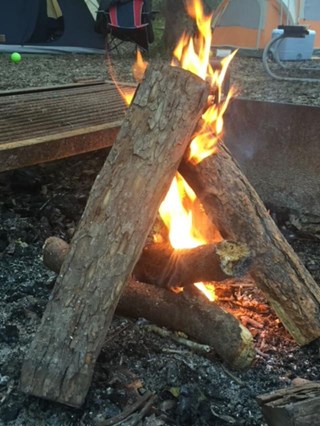
Knowing how to start a fire is not only important for a great and memorable time but is a skill that could actually save your life! This is the time of the year that getting lost in the woods can quickly become a tragedy. Hypothermia can set in quickly. Hypothermia is when the body’s core temperature drops below 95 degrees Fahrenheit. When this occurs, the vital organs such as the heart and kidneys start to fail, and the central nervous system cannot function properly. If you cannot find some source of warmth, death can occur. That source of heat can be fire.
Knowing the 3’s of fire building can literally save your life. There are several sets of 3’s that anyone heading outdoors this winter needs to be aware of. The first set of 3’s is what every fire needs to burn: heat, fuel and oxygen. The rest are subsets of the main 3.
Heat
Fire and heat are synonymous; you cannot have fire without heat. It is heat that ignites the material you are burning. This is why you can put out a fire by dousing it with water. The water removes the heat from the fire, thus extinguishing the flame.
Heat is the ignition source. One type of ignition source can come from nature. Lightning is the cause of many forest fires. Prairie fires are often caused by spontaneous combustion when intense heat from the sun ignites dry prairie grasses. Unfortunately, when you need a fire, Mother Nature rarely cooperates,
you should always have a heat source with you when you are venturing on an outdoor excursion. The most common type of heat source is a simple lighter, but it is wise to bring more than one because Murphy’s Law will dictate that if you only have one, it will not work!
Many times, you need more than just a lighter to start a fire. Fire starters are lightweight and compact so they can easily be put in your day pack, backpack or hunting pack. Fire starters can be purchased commercially or can be easily made with common household items. Three common homemade fire starters are Vaseline and cotton balls, waxed paper towels, and Crisco and sawdust.
Vaseline and cotton balls are the most common homemade fire starters. This type of fire starter is made by rolling cotton balls in Vaseline until they are saturated. They can also be made by dipping the cotton balls into warmed, melted Vaseline. To use, place three cotton balls together and light with your lighter to ignite your fire. These balls can be kept in a waterproof container until needed.
Waxed paper towels are made with paper towels and left-over candle wax. You start by tightly rolling paper towels into a log. The log is then secured by tying cotton strings at intervals so that when cut, you have 3-inch pieces tied in the middle with string. The tail of the string should be about 3 inches long. While holding the string, the logs should be dipped in the melted candle wax until saturated. To use, light the wax-coated string as a candle wick. The log will then ignite your fire material.
Crisco and sawdust fire starters are very useful in wet weather. This is a 50-50 shortening and sawdust paste that can be stored in a squeeze tube, bottles or anything else that can hold a paste. Whatever the container, make sure that it has a tight-closing lid. To use, just squeeze out about a 3-inch line and light.
Fuel
Fuel is what burns to create the heat that could stave off hypothermia. There are three types of materials used in building a fire: tinder, kindling and fuel. Knowing what these are and where to find them is vital to building a lifesaving fire.
- Tinder. Tinder is small and is a material that is easy to light— items such as lint, pine needles, moss, dry grasses, twigs, etc. The main thing to remember about these small combustible materials is that they must be dry. Wet tinder is useless.
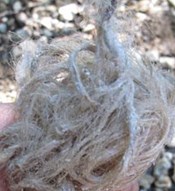 Good places to find dry tinder are anywhere the sun can dry it out or where it is protected from moisture. Small twigs can be snapped off branches off the ground. Dry leaves or other natural litter found under overhangs are good sources of starting material. You can also find dry tinder under a thick carpet of wet litter. For example, if there is a thick layer of pine needles on the forest floor, you can dig deep in the tinder and find dry material underneath.
Good places to find dry tinder are anywhere the sun can dry it out or where it is protected from moisture. Small twigs can be snapped off branches off the ground. Dry leaves or other natural litter found under overhangs are good sources of starting material. You can also find dry tinder under a thick carpet of wet litter. For example, if there is a thick layer of pine needles on the forest floor, you can dig deep in the tinder and find dry material underneath. - Kindling. Kindling consists of small sticks, usually less than 1-inch in diameter. Kindling is harder to light than tinder, but easier to light than fuel. Tinder is used to burn long enough to light these 1-inch strips of wood. Keep adding kindling until you have a sustainable flame. This flame must burn long enough to ignite larger pieces of wood.
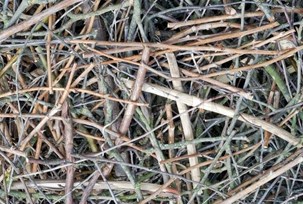 Fat wood is a great source of kindling. Fat wood is gathered from dead pine stumps. As a conifer dies, the turpentine or pitch drains down and collects in the lower part of the tree. Sometimes, fat wood can be so saturated with pitch that it is waterproof and extremely flammable. Also look for drips of pine tar on the bark of pine trees. Carefully removing the bark with pine sap on it makes a great source of kindling.
Fat wood is a great source of kindling. Fat wood is gathered from dead pine stumps. As a conifer dies, the turpentine or pitch drains down and collects in the lower part of the tree. Sometimes, fat wood can be so saturated with pitch that it is waterproof and extremely flammable. Also look for drips of pine tar on the bark of pine trees. Carefully removing the bark with pine sap on it makes a great source of kindling. - Fuel. Fuel is the larger pieces of wood or other material that we traditionally think of as a campfire. Fuel can be larger sticks and logs that sustain the fire which sustains the life-saving heat.
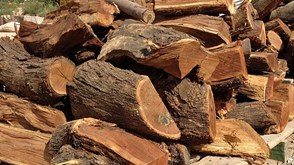 Once you are warm and have staved off hypothermia, it is extremely important that you gather a large amount of additional fuel to keep the fire going. Once the fire is strong, it can be used to dry out other wet pieces of fuel. This is done by circling the fire with the wet pieces close enough that the heat dries out the wet logs—but do not let any moisture that is “cooked” out of the drying logs to extinguish your fire.
Once you are warm and have staved off hypothermia, it is extremely important that you gather a large amount of additional fuel to keep the fire going. Once the fire is strong, it can be used to dry out other wet pieces of fuel. This is done by circling the fire with the wet pieces close enough that the heat dries out the wet logs—but do not let any moisture that is “cooked” out of the drying logs to extinguish your fire.
Oxygen
Oxygen is the last thing that you need to build a fire. Make sure that there are gaps between the material you are adding to your fire so that oxygen can be drawn through. Fire draws oxygen through it to fuel the combustion. This is why hurricane-force winds can be experienced in large forest fires. If you just throw wood on a fire instead of carefully placing pieces on top, to can extinguish the flames. This is no different from covering a campfire with sand or soil, stamping out a fire, or covering a grease fire on the stove with a lid. All of these examples deprive the fire of oxygen, thus extinguishing the fire.
When adding tinder, kindling and fuel, it is often necessary to add oxygen to the fire or your flame could be extinguished. You can do this by blowing on or fanning the flames, but do this under the flame, not on top of the flame. This is a common mistake. When you blow on the flames you are removing heat, thus extinguishing your flames, and possibly putting out the fire you desperately need. When blowing on a fire, you should place one of your cheeks on the ground or almost touching the ground, while steadily blowing for about three seconds, and repeat three times. After each series of blowing on the flames, let the fire recover and observe. If you need to blow on the flames again, repeat the process.
When we take to the field, regardless of the activity, there are skills we normally practice so that we excel in them. Unfortunately, outdoorsmen and women seldom practice skills they need in an emergency. Like any skill, building a fire takes practice. This skill can also be the difference between life and death.












